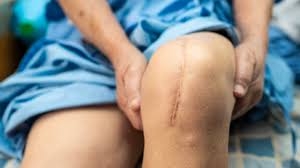Knee pain and mobility issues can significantly impact a person’s quality of life. For those considering knee replacement, understanding the nuances between partial and full knee replacement is crucial.
Leading consultant orthopaedic surgeon Mr Sanjiv Manjure provides a guide to navigating partial knee replacement, including the ideal candidate for the surgery, potential risks and complications and the recovery process following the procedure.
What is the difference between a partial knee replacement and full knee replacement?
The primary distinction between partial and full knee replacement lies in the extent of the procedure. In a partial knee replacement, only the damaged part of the knee joint is replaced with an artificial implant, preserving the healthy surrounding tissues. This targeted approach can offer several advantages, including a potentially quicker recovery and a more natural feeling in the knee.
Who is a candidate for partial knee replacement?
Not everyone with knee issues is a candidate for partial knee replacement. Generally, individuals experiencing arthritis or damage confined to a specific compartment of the knee may be suitable candidates. This procedure is more effective when the damage is limited, and the rest of the knee remains healthy. Your orthopaedic surgeon will assess your condition and determine the most appropriate course of action.
What is involved in partial knee replacement surgery?
Partial knee replacement surgery involves several key steps. During the procedure, the damaged cartilage and bone are removed from the affected compartment, and a prosthetic implant is precisely positioned. This meticulous approach minimises disruption to the surrounding tissues, promoting a faster recovery.
The surgery may be performed under general or regional anaesthesia. The choice depends on factors such as the patient's health and the surgeon's preference. Typically, partial knee replacement is conducted using minimally invasive techniques, resulting in smaller incisions and reduced trauma to the tissues.
What are the potential risks and complications linked to partial knee replacement surgery?
As with any surgery, there are potential risks associated with partial knee replacement. These may include infection, blood clots, and adverse reactions to anaesthesia. It is essential to discuss these risks with your surgeon beforehand, ensuring you have a comprehensive understanding of the potential complications and how they can be managed.
What is the recovery process for partial knee replacement?
Recovery from partial knee replacement varies from person to person, but many individuals experience a quicker rehabilitation compared to full knee replacement. Early mobility and physical therapy play integral roles in the recovery process. Initially, you will work with a physiotherapist to regain strength and flexibility, gradually progressing towards normal activities.
What can I do to help my recovery after a knee replacement? Will I need physical therapy?
To enhance your recovery, it is crucial to follow your surgeon's recommendations diligently. You should engage in prescribed exercises to strengthen the muscles around the knee, aiding in stability, and manage pain and swelling through medication and ice packs as advised.
Physical therapy is often a crucial component of recovery after partial knee replacement. A physiotherapist will guide you through exercises which are designed to improve range of motion and build strength. Consistent participation in these sessions can significantly contribute to successful rehabilitation.





